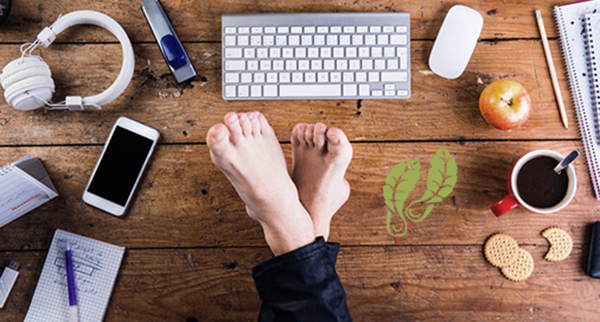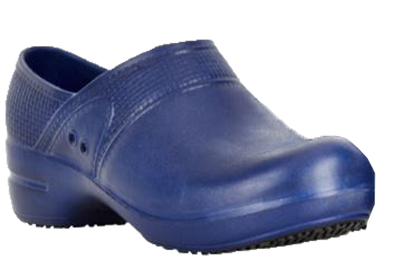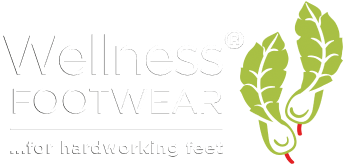10 tips to finding the best shoes for your job

So, what’s the best type of shoe for my job?
It’s a question that I get asked a lot, particularly by people in the healthcare and hospitality space. There are heaps of roles in our community that mean standing for long periods of time during a days’ work, or night as it is for some!
How often do you go to a café and see waiters wearing runners? And hospital workers, like nurses, wearing runners? Runners are designed for what? Yep, running. That means they are designed to be used intensively for up to a couple of hours at a time, several times a week.
Or perhaps they are wearing a casual or leisure shoe. Same thing really. They are comfortable in general, or we wouldn’t buy them right, but after 8 hours, really? They look great, they match our outfit perfectly and they make me feel fantastic, so I wear them… out to dinner, parties, whatever. But perhaps not to work if I want to be sane at the end of my shift!
The problem with wearing these types of shoes is that they have minimal, if any, support where it’s needed. Some of them have a great memory foam insert and they may even have an arch support shaped foam bed. It feels all squishy and nice at first, but what happens when you put weight on foam….. it squashes. And you can bet after 8, 10 or 12 hours on your feet, your feet and back need more than a whole lot of squish.
Now I know that Bare-Is-Best is a great movement that is currently very popular, and I’m absolutely all-for bare feet, in small to medium doses. In fact, who doesn’t love taking their shoes off and walking bare-foot, connecting with mother nature or on the tiles or timber floors at the end of a long day? Wiggle those tootsies, stretch the joints and tendons. Feels great. But no support is not the best for our bodies for long periods of time on hard floors. With no support there is a huge amount of pressure on our lower backs, hips, knees, ankles and feet.
So, what do you need to look for when buying the perfect shoes for your job as a chef, waiter, theatre nurse, general nurse, hospital or restaurant worker?
Some of the suggestions here may surprise you.
1. Breathable upper
That might be leather or a great vegan friendly textile. Either way, your feet need to be in an environment that breathes and is able to dry and restore naturally overnight.
2. Roomy toe box.
Toes need to be able to spread out, not be crowded and pushed together. They need to be able to stretch and definitely not “claw” when walking. This is definitely the case when wearing clogs – always ensure your toes are comfortable
3. Snug fit.
Fit snuggly over the top of the foot, particularly with clogs. Take into consideration that shoes of all types tend to stretch or give a little. Some may need to start out quite snug to continue to be a great fit down the track.
4. High on instep.
Come up high over the instep. This is what keeps your feet in the shoes without “clawing” your toes. Again, really important with clogs and slip-ons.
5. Easy Clean.
Now there’s an idea. You can, but maybe don’t want to, imagine the types of spills that occur in a surgical theatre or a fast-paced kitchen. That gunk’s got to be easy to get off.
6. Arch Support.
This is really paramount and the amount of arch support you need will depend on your feet. You don’t just need to be able to feel the cushioning under your arch, you need to be able to feel the support. The support should fit nicely along your arch, comfortable between forefoot and heel. The structure of the arch support needs to be solid, not just padding. What happens to padding? It squashes.
Note of warning – if you are new to arch support, don’t jump right in there for 8-12 hours the first time. Ease into it. 2 hours today, 4 tomorrow, 6 the next day and so on. Your planta fascia will be grateful.
7. Flexibility.
Some places on the shoe this good, some places it’s not so good. A rule of thumb is that shoe flexibility around the metatarsal joints (ball of the foot) is good, but if you’re like me and suffer from that dreaded arthritis, you don’t want too much. A little stiffness there is OK.
Where you don’t want any shoe flexibility is through the midsole. Try wringing the shoe like you would a cloth or towel. If it twists and bends freely through the middle, it’s not so good.
8. Heel Cup.
Does the insole include a heel cup? This helps if you are susceptible to heel spurs. It cradles the heel and keeps it firmly in place.
9. Length.
People tend to like their feet to come right to top end and back end of shoes – it’s OK to have big feet people, just get a bigger size. Toes should never be hitting the front of your shoes, that’s if you want to hang on to your toenails – ouch! And in the case of clogs, your heels should not hang over the back. Ideally, there should be about a 0.5 cm at the back of the clog. Of course if you’re buying lace-ups or snug slip-ons, this may not be relevant.
10. Heel Rise – super important
For people on their feet for long periods of time, particularly when standing in a slightly bent position, this is the most important one. A heel rise of 1.5 to 2cm is optimal for the most lower back support.
Do this little exercise for me: stand flat footed. Raise your heels about 1.5 to 2cm off the ground. Notice your pelvis come forward, your abs and quads ever-so-slightly engage? That’s taking a small amount of strain from your lower back. Feels good.
It also spreads the load a little more evenly over the entire foot rather than just sitting in your heels.
If you would like to chat more about you and what would be great for your role, connect with us, send us an email or visit our other blog articles.
Thanks for reading and feel free to share, comment and like.
“I could walk a mile in your shoes, but I already know they're just as uncomfortable as mine. Let's walk next to each other instead...”
― Lynda Meyer





